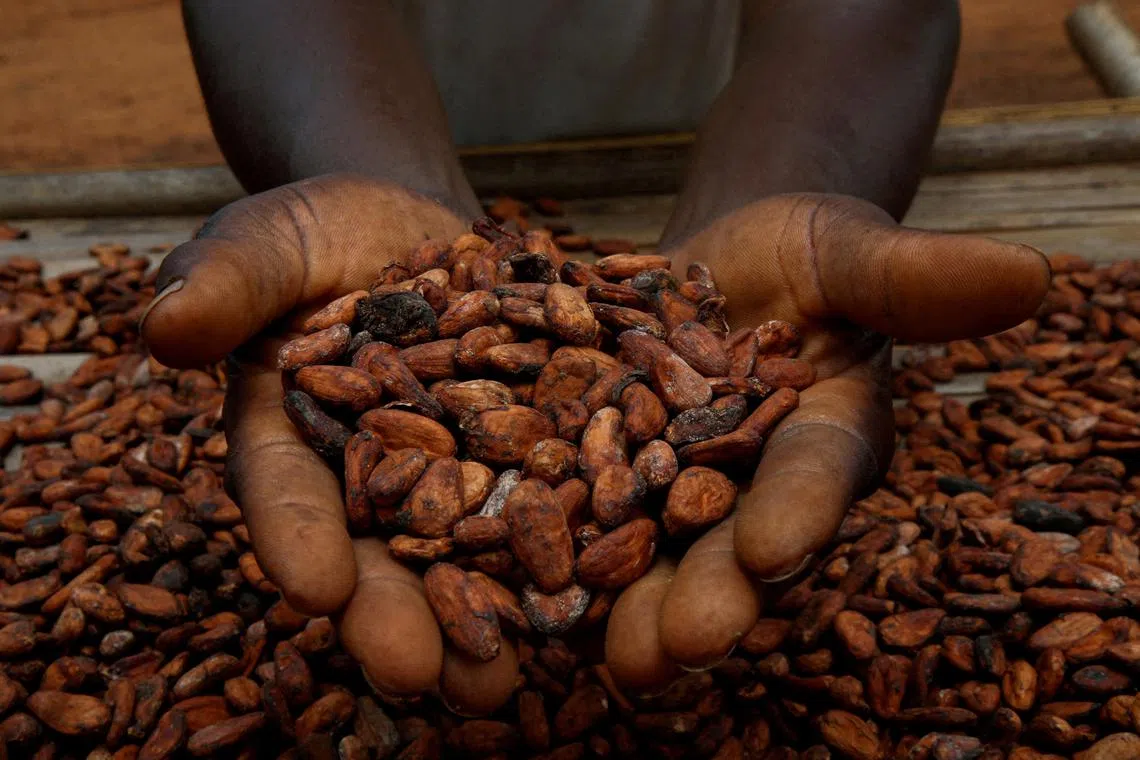Asia’s chocoholics will indulge even as cocoa prices soar, industry veteran says
Sign up now: Get insights on Asia's fast-moving developments

The Asia-Pacific chocolate market is projected to reach close to US$37 billion (S$49.6 billion) in revenue by the end of 2030.
PHOTO: REUTERS
Follow topic:
JOHOR – Asia’s growing number of chocolate lovers will indulge their sweet tooth even as cocoa prices skyrocket to the highest level since the 1970s, a veteran of the industry says.
With more than half of the world’s people, Asia accounts for only roughly a quarter of cocoa consumption, making it a growth market for chocolate producers as populations – and disposable incomes – grow.
Three years of pandemic restrictions dealt a severe blow, as entertaining, gifting and impulse purchases declined. Then the price of the key ingredient took off, thanks to punishing rains in West Africa.
“Cocoa and chocolate indulgences are still in demand,” said Mr Elie Fouche, chairman of the Cocoa Association of Asia, who has worked in the industry for about 17 years.
“Demand for cocoa and chocolate products has remained steady despite the price increases that we have observed already for quite a few months.”
Cocoa grinding in the Asia-Pacific, the best indicator of demand, has rebounded from Covid-19 lows, Mr Fouche said.
While down from a year earlier as the industry finds its post-pandemic balance, processing was “better than expected” in the three months to end-September, the association said.
“The dip is behind us,” Mr Fouche said, speaking at Swiss-based Barry Callebaut’s factory in Malaysia’s southern state of Johor, one of the largest plants in Asia where beans are turned into cocoa mass, butter and powder – the key ingredients to make chocolate bars, cookies, ice cream and drinks.
The younger generation in Asia likes to indulge, Mr Fouche said.
This, along with low per-capita consumption of chocolate compared with countries in Europe, will help the region to remain a growth engine even at times of high prices. India, China and South-east Asia especially have big potential.
The Asia-Pacific chocolate market is projected to reach close to US$37 billion (S$49.6 billion) in revenue by the end of 2030, growing at a compound annual rate of 7 per cent from now until the end of the decade, according to consulting firm Coherent Market Insights.
This is close to double the rate seen for the global market overall.
The catch, for now, is price. Cocoa futures traded in New York reached a 46-year-high in late November as bad weather and crop disease hurt production and delayed harvests in West Africa, the world’s biggest-growing region.
This prompted companies such as Mondelez International, maker of Oreo cookies and Toblerone, as well as Nestle, to raise prices of products in 2024.
Inflated prices are likely to be sustained in 2024 as the market heads for its third consecutive supply deficit, Rabobank said in a report in December.
Mr Fouche said: “When you look at official consumption data, grind data, they have been relatively resilient.”
The good news for chocolatiers is that there are additional products to lure consumers. Young gourmets are drawn to healthier chocolate, including products with a higher content of cocoa and flavanols, said Mr Fouche, as well as so-called functional foods, like high-protein chocolate. Flavanols are known for their antioxidant properties.
“I want to eat something good, I want to eat something good for me and I want to eat also something good for the planet or good for the farmers,” he said.
“These are trends that probably emerged first in the Western world or developed world. Now, they are finding their way also into the Asia-Pacific.” BLOOMBERG

